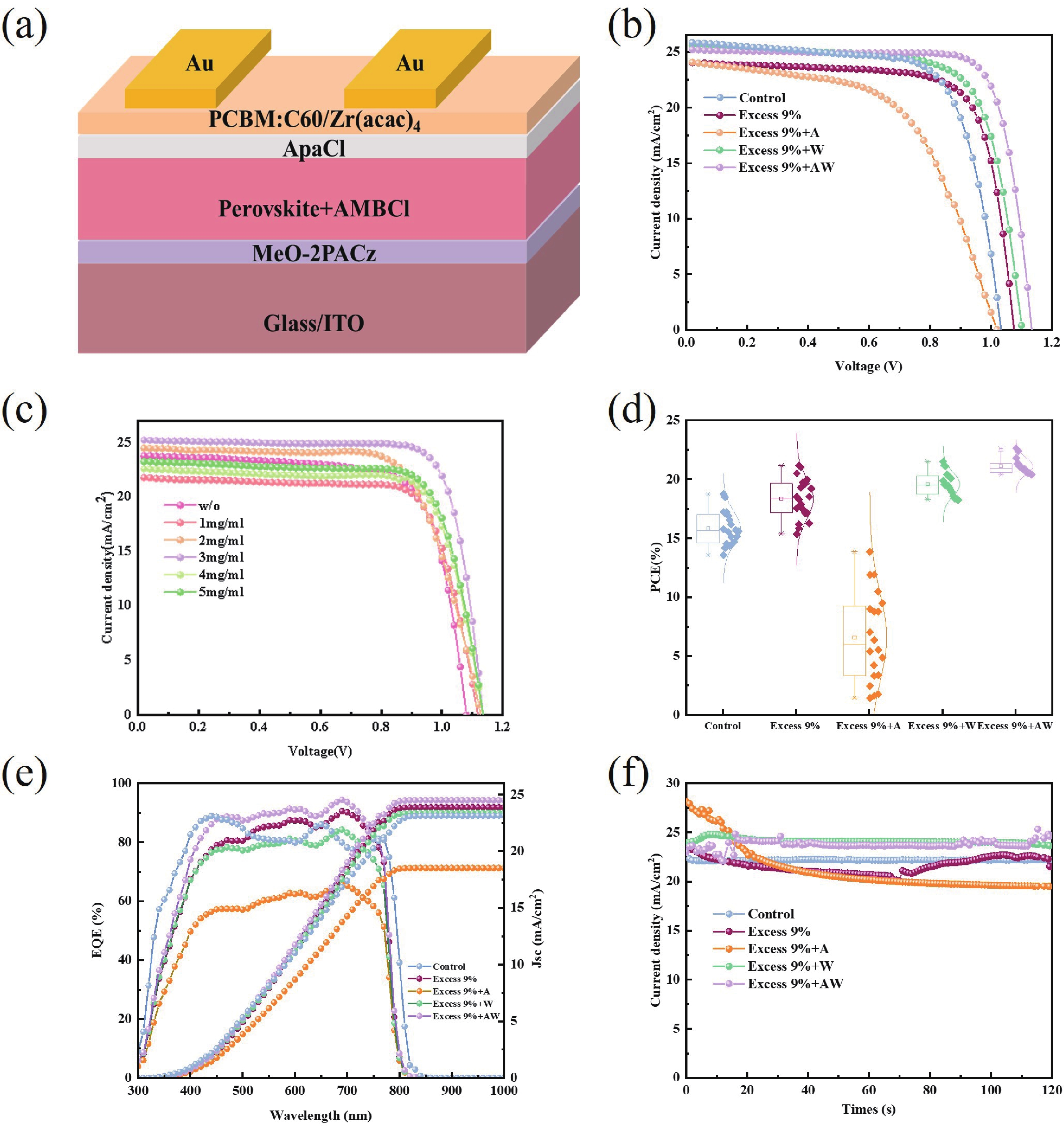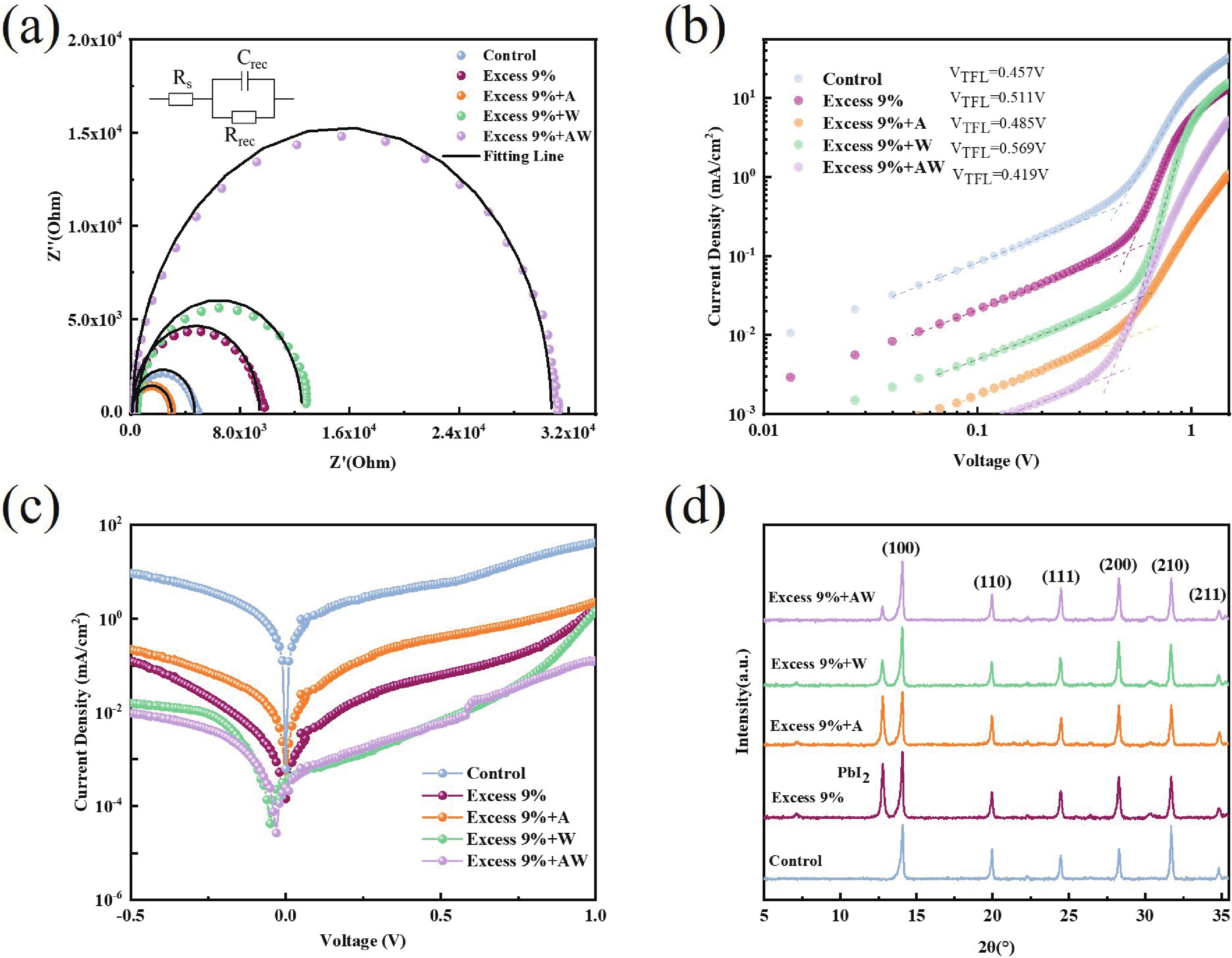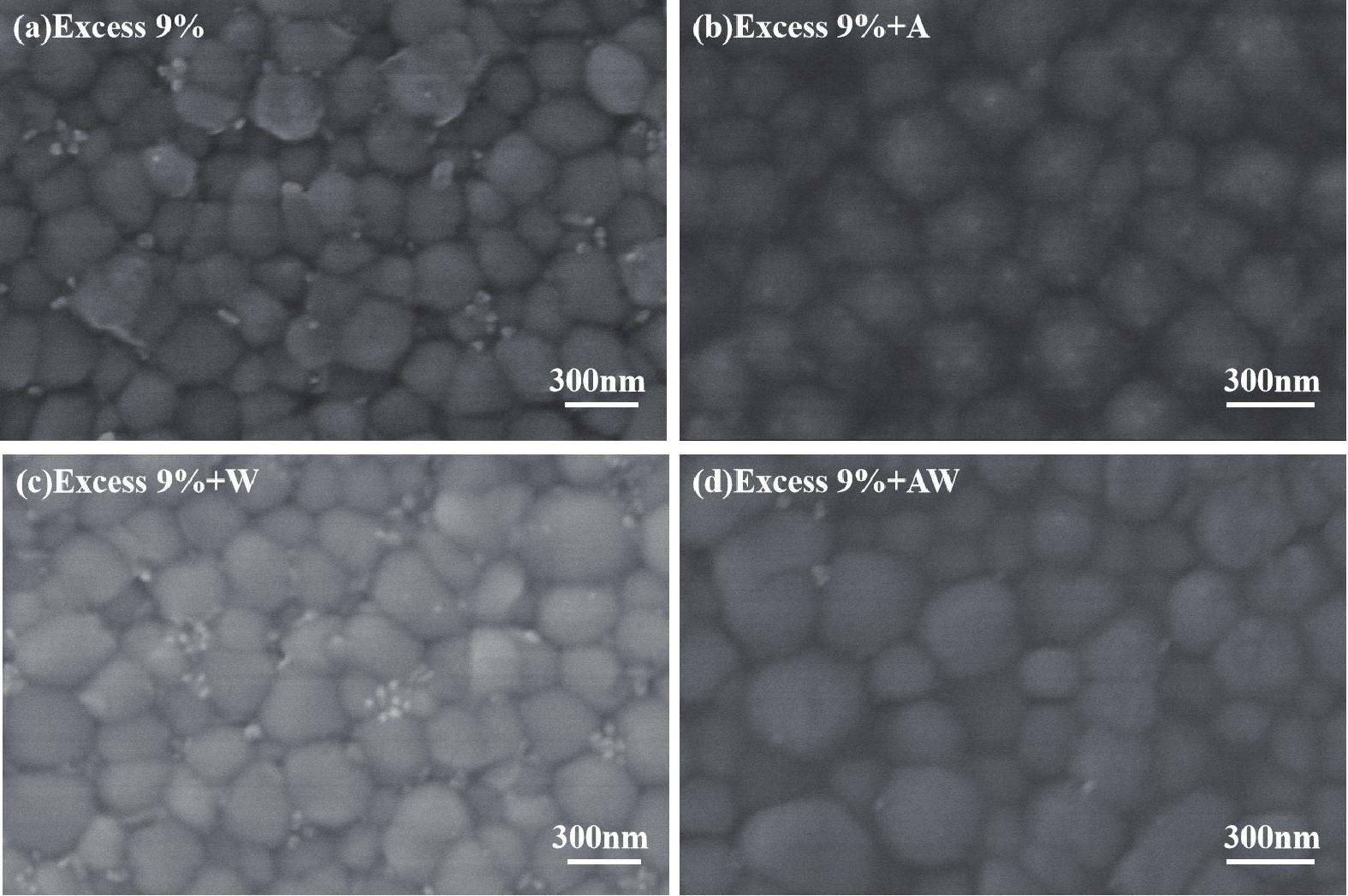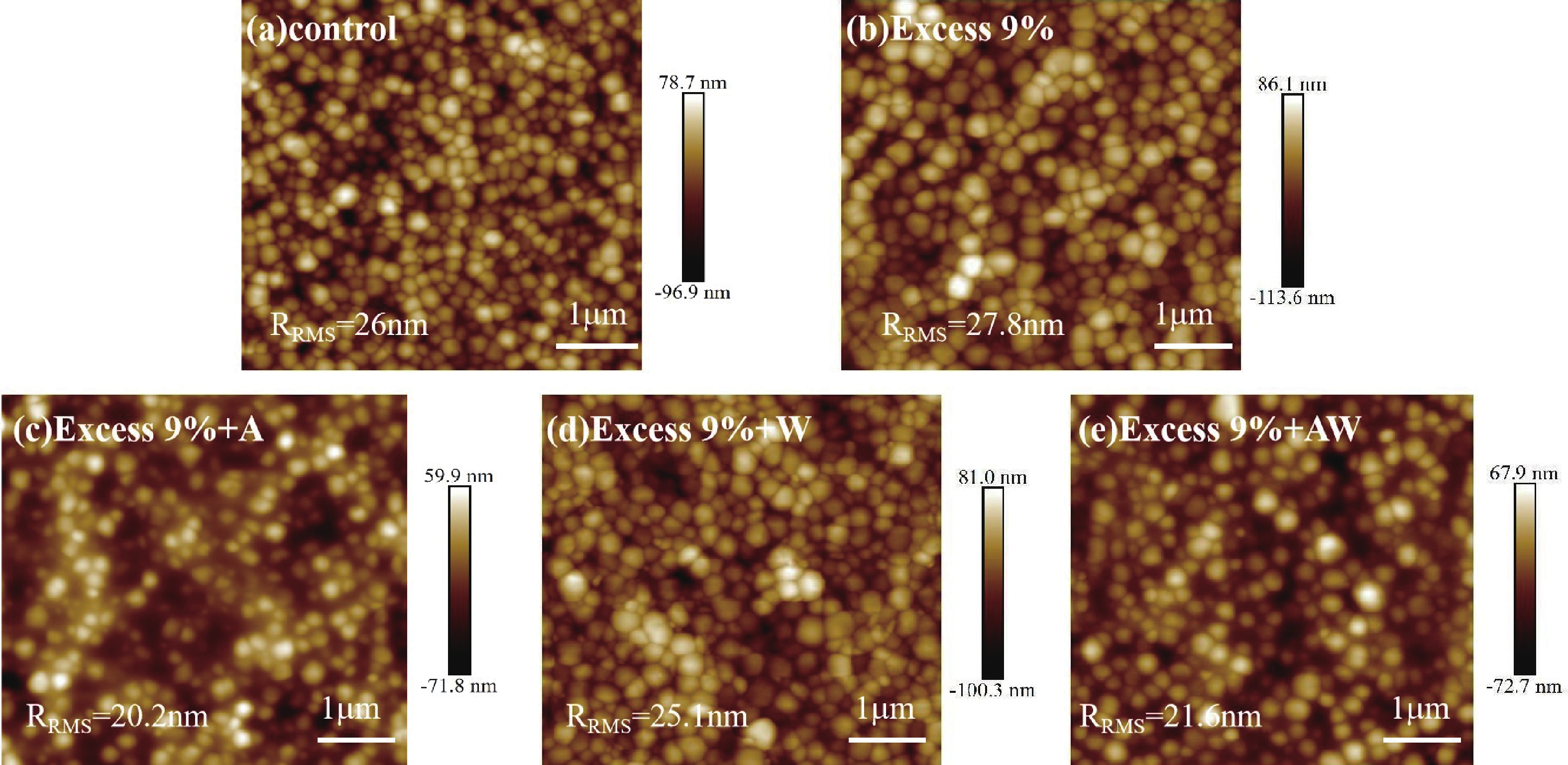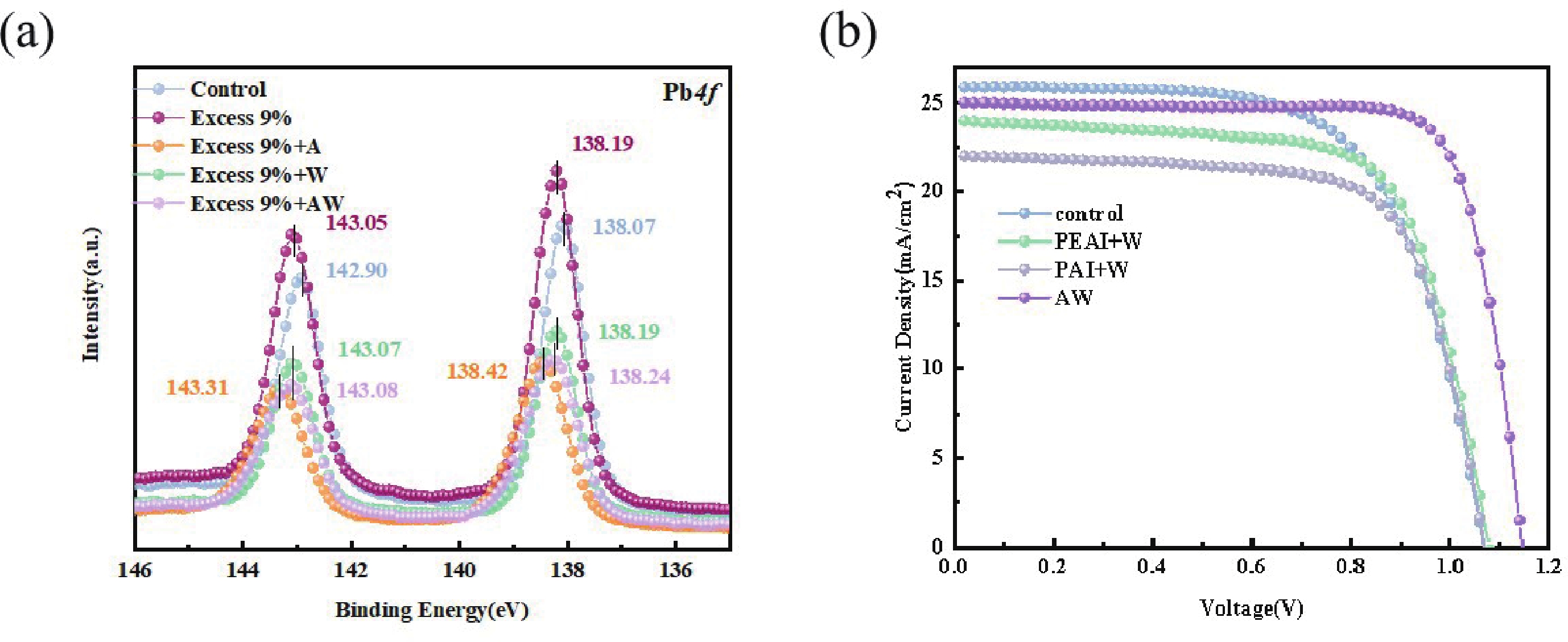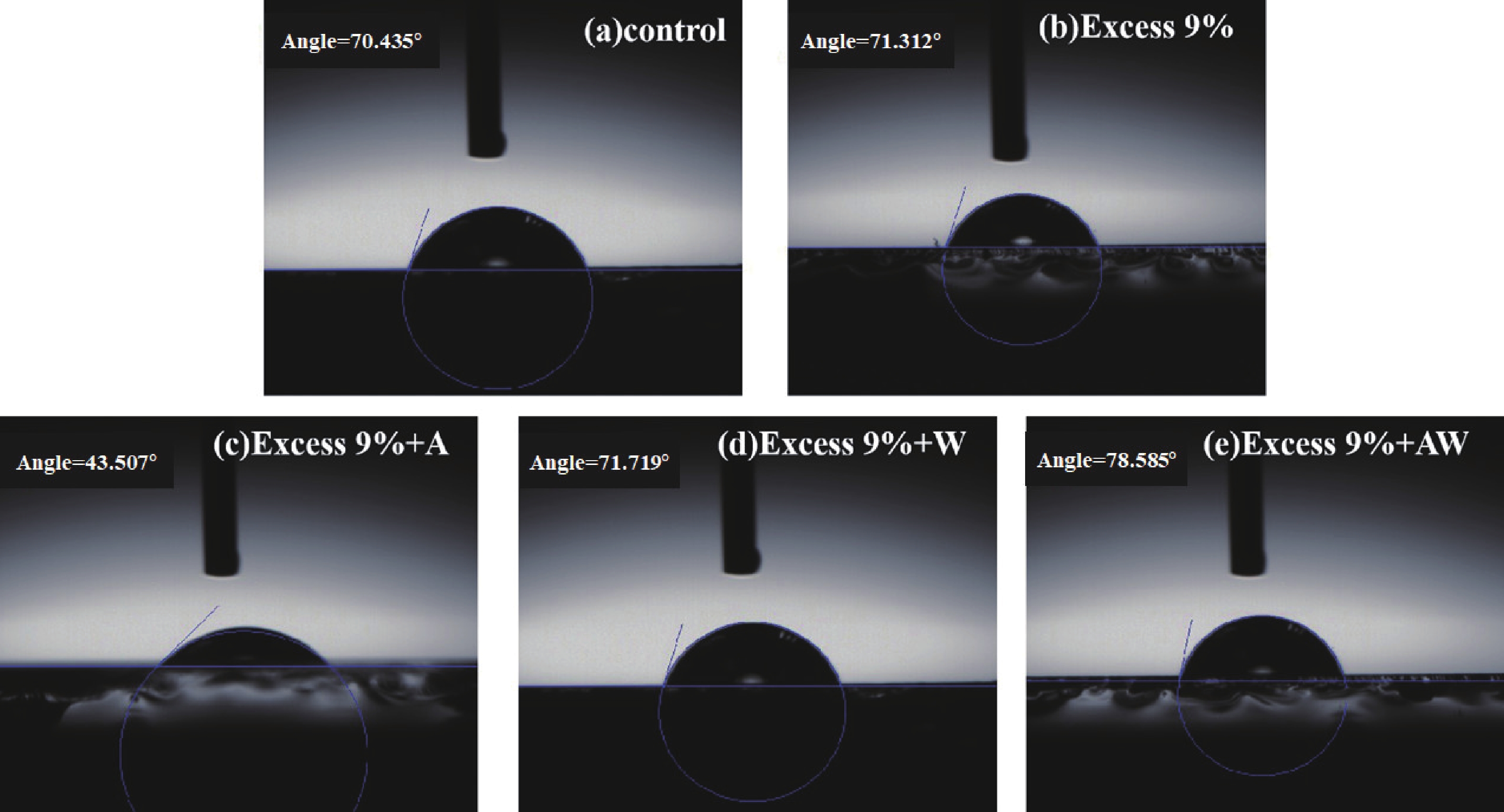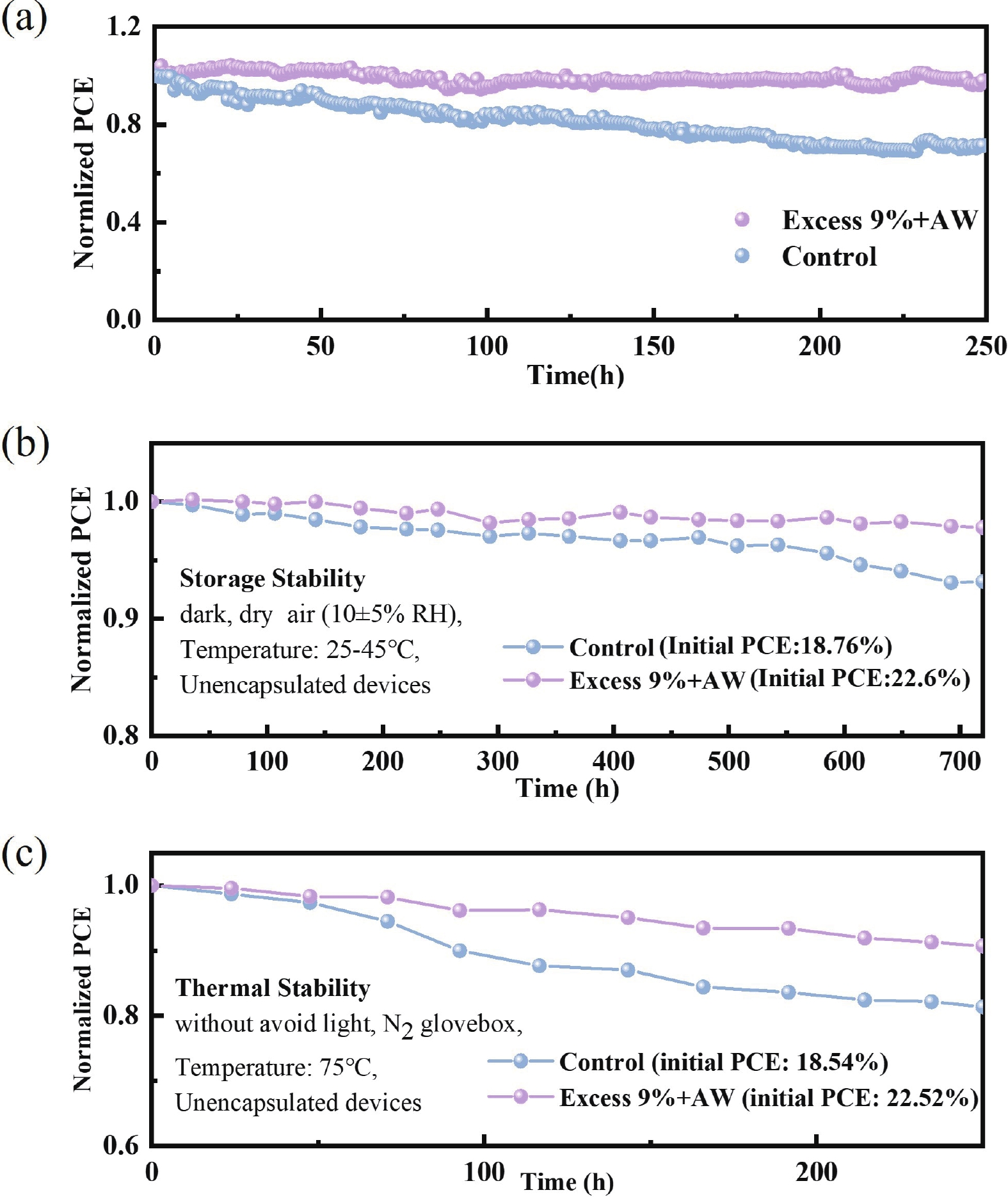| Citation: |
Kunyang Ge, Chunjun Liang. Improved efficiency and stability of inverse perovskite solar cells via passivation cleaning[J]. Journal of Semiconductors, 2024, 45(10): 102801. doi: 10.1088/1674-4926/24040033
****
K Y Ge and C J Liang, Improved efficiency and stability of inverse perovskite solar cells via passivation cleaning[J]. J. Semicond., 2024, 45(10), 102801 doi: 10.1088/1674-4926/24040033
|
Improved efficiency and stability of inverse perovskite solar cells via passivation cleaning
DOI: 10.1088/1674-4926/24040033
CSTR: 32376.14.1674-4926.24040033
More Information-
Abstract
Amidst the global energy and environmental crisis, the quest for efficient solar energy utilization intensifies. Perovskite solar cells, with efficiencies over 26% and cost-effective production, are at the forefront of research. Yet, their stability remains a barrier to industrial application. This study introduces innovative strategies to enhance the stability of inverted perovskite solar cells. By bulk and surface passivation, defect density is reduced, followed by a "passivation cleaning" using Apacl amino acid salt and isopropyl alcohol to refine film surface quality. Employing X-ray diffraction (XRD), scanning electron microscope (SEM), and atomic force microscopy (AFM), we confirmed that this process effectively neutralizes surface defects and curbs non-radiative recombination, achieving 22.6% efficiency for perovskite solar cells with the composition Cs0.15FA0.85PbI3. Crucially, the stability of treated cells in long-term tests has been markedly enhanced, laying groundwork for industrial viability. -
References
[1] Liang Z, Zhang Y, Xu H, et al. Homogenizing out-of-plane cation composition in perovskite solar cells. Nature, 2023, 624(7992), 557 doi: 10.1038/s41586-023-06784-0[2] Zhang C, Wang Y, Lin X, et al. Effects of a site doping on the crystallization of perovskite films. J Mater Chem A, 2021, 9(3), 1372 doi: 10.1039/D0TA08656H[3] Gong J, Guo P, Benjamin S E, et al. Cation engineering on lead iodide perovskites for stable and high-performance photovoltaic applications. J Energy Chem, 2018, 27(4), 1017 doi: 10.1016/j.jechem.2017.12.005[4] Knight A J, Borchert J, Oliver R D J, et al. Halide segregation in mixed-halide perovskites: influence of A-site cations. ACS Energy Lett, 2021, 6(2), 799 doi: 10.1021/acsenergylett.0c02475[5] Huang Z, Bai Y, Huang X, et al. Anion–π interactions suppress phase impurities in FAPbI3 solar cells. Nature, 2023, 623(7987), 531 doi: 10.1038/s41586-023-06637-w[6] Tan S, Huang T, Yavuz I, et al. Stability-limiting heterointerfaces of perovskite photovoltaics. Nature, 2022, 605(7909), 268 doi: 10.1038/s41586-022-04604-5[7] Zhang Z, Chen W, Jiang X, et al. Suppression of phase segregation in wide-bandgap perovskites with thiocyanate ions for perovskite/organic tandems with 25.06% efficiency. Nat Energy, 2024, 9, 592 doi: 10.1038/s41560-024-01491-0[8] Saliba M, Matsui T, Seo J Y, et al. Cesium-containing triple cation perovskite solar cells: improved stability, reproducibility and high efficiency. Energy Environ Sci, 2016, 9(6), 1989 doi: 10.1039/C5EE03874J[9] Ramos-Terrón S, Illanes J F, Bohoyo-Gil D, et al. Insight into the role of guanidinium and cesium in triple cation lead halide perovskites. Sol RRL, 2021, 5(12), 2100586 doi: 10.1002/solr.202100586[10] Luo C, Zheng G, Gao F, et al. Engineering the buried interface in perovskite solar cells via lattice-matched electron transport layer. Nat Photonics, 2023, 17(10), 856 doi: 10.1038/s41566-023-01247-4[11] Yang W, Ding B, Lin Z, et al. Visualizing interfacial energy offset and defects in efficient 2D/3D heterojunction perovskite solar cells and modules. Adv Mater, 2023, 35(35), 2302071 doi: 10.1002/adma.202302071[12] Kempe M D. Ultraviolet light test and evaluation methods for encapsulants of photovoltaic modules. Sol Energy Mater Sol Cells, 2010, 94(2), 246 doi: 10.1016/j.solmat.2009.09.009[13] Jorgensen G J, Terwilliger K M, DelCueto J A, et al. Moisture transport, adhesion, and corrosion protection of PV module packaging materials. Sol Energy Mater Sol Cells, 2006, 90(16), 2739 doi: 10.1016/j.solmat.2006.04.003[14] Gaulding E A, Louks A E, Yang M, et al. Package development for reliability testing of perovskites. ACS Energy Lett, 2022, 7(8), 2641 doi: 10.1021/acsenergylett.2c01168[15] Li J, Xia R, Qi W, et al. Encapsulation of perovskite solar cells for enhanced stability: Structures, materials and characterization. J Power Sources, 2021, 485, 229313 doi: 10.1016/j.jpowsour.2020.229313[16] Akin S, Arora N, Zakeeruddin S M, et al. New strategies for defect passivation in high-efficiency perovskite solar cells. Adv Energy Mater, 2020, 10(13), 1903090 doi: 10.1002/aenm.201903090[17] Fu L, Li H, Wang L, et al. Defect passivation strategies in perovskites for an enhanced photovoltaic performance. Energy Environ Sci, 2020, 13(11), 4017 doi: 10.1039/D0EE01767A[18] Gao F, Zhao Y, Zhang X, et al. Recent progresses on defect passivation toward efficient perovskite solar cells. Adv Energy Mater, 2020, 10(13), 1902650 doi: 10.1002/aenm.201902650[19] Sun C, Xu L, Lai X, et al. Advanced strategies of passivating perovskite defects for high-performance solar cells. Energy Environ Mater, 2021, 4(3), 293 doi: 10.1002/eem2.12111[20] Zhao Y, Ma F, Qu Z, et al. Inactive (PbI2)2RbCl stabilizes perovskite films for efficient solar cells. Science, 2022, 377(6605), 531 doi: 10.1126/science.abp8873 -
Proportional views





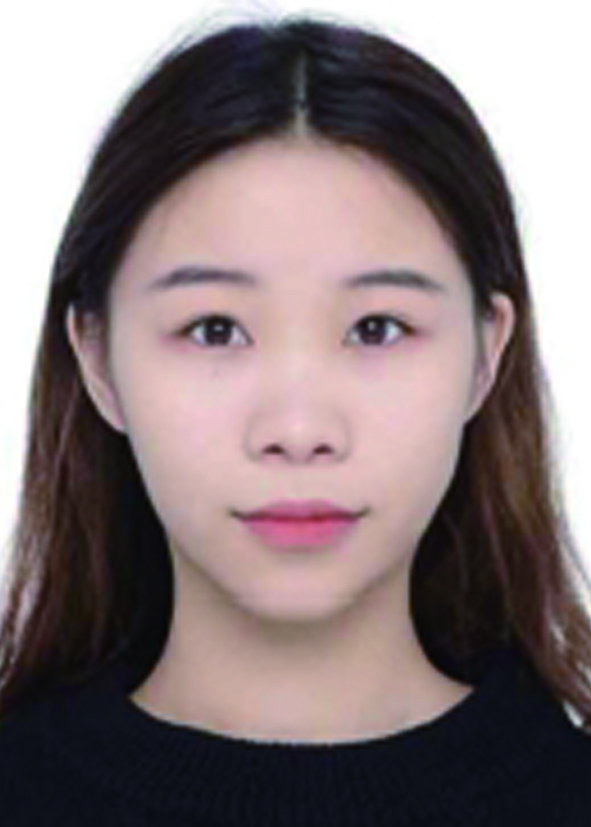 Kunyang Ge is a master of Science at the School of Physical Science and Engineering of Beijing Jiaotong University, studied under Professor Chunjun Liang. Her research focus is on organic–inorganic hybrid perovskite solar cells.
Kunyang Ge is a master of Science at the School of Physical Science and Engineering of Beijing Jiaotong University, studied under Professor Chunjun Liang. Her research focus is on organic–inorganic hybrid perovskite solar cells.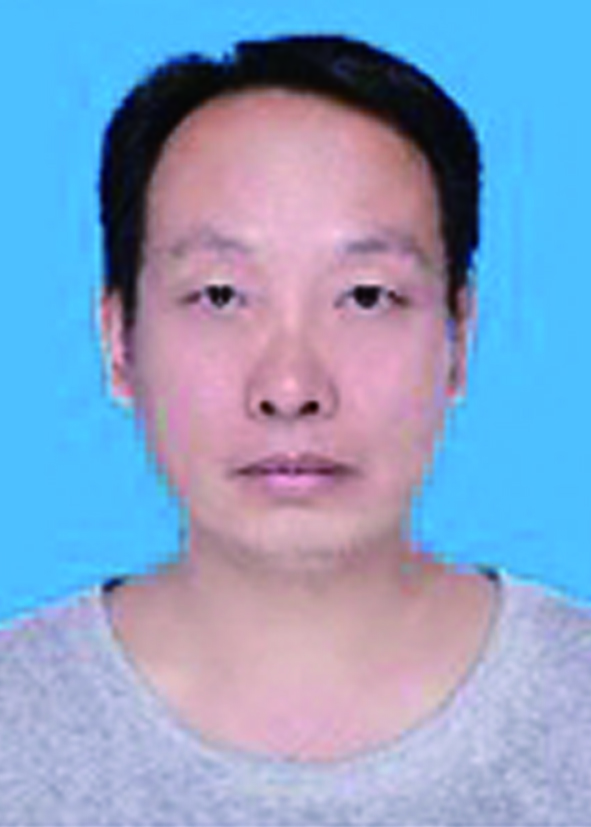 Chunjun Liang received his bachelor's degree from Jilin University in 1995 and his Ph. D. degree from Changchun Institute of Optics, Fine Mechanics and Physics, Chinese Academy of Sciences in 2000. He then joined the Department of Physical Science and Materials Science at the City University of Hong Kong as a postdoctoral fellow. He joined Beijing Jiaotong University as a professor in 2002. His research interest is in perovskite solar cells.
Chunjun Liang received his bachelor's degree from Jilin University in 1995 and his Ph. D. degree from Changchun Institute of Optics, Fine Mechanics and Physics, Chinese Academy of Sciences in 2000. He then joined the Department of Physical Science and Materials Science at the City University of Hong Kong as a postdoctoral fellow. He joined Beijing Jiaotong University as a professor in 2002. His research interest is in perovskite solar cells.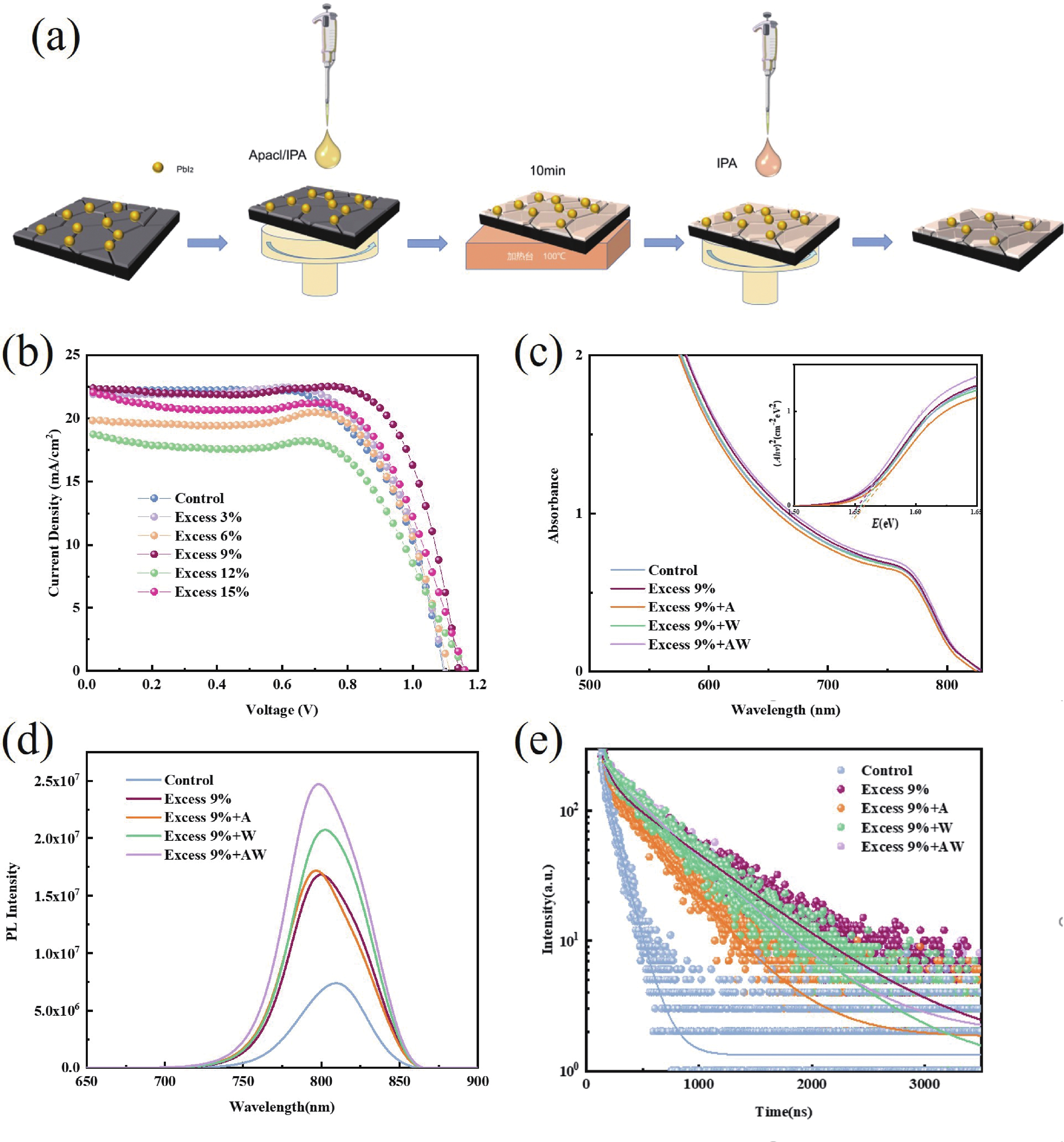
 DownLoad:
DownLoad:
